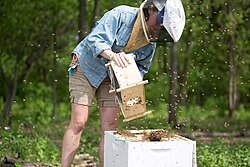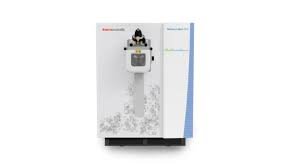Thursday, 13 November 2025
Jordan’s honey industry blossoms in 2024 amid production surge and government support
The massive expansion in the colony base appears to be the primary driver behind the industry’s overall volume growth Jordan’s honey industry witnessed a remarkable transformation in 2024, marked by…

The massive expansion in the colony base appears to be the primary driver behind the industry’s overall volume growth
Jordan’s honey industry witnessed a remarkable transformation in 2024, marked by a sharp increase in overall production, government-backed initiatives, and a heightened emphasis on quality and local sourcing. According to the Department of Statistics’ latest report, honey yields surged by 28.6 per cent, reaching 418 tons compared to 325 tonnes in 2023, a clear indicator of revitalised activity in the sector.
This boost in output came despite a 39 per cent drop in average honey production per colony, which fell from 8 kilograms in 2023 to 4.9 kilograms in 2024. The decline in per-colony productivity was offset by a dramatic 110 per cent rise in the total number of bee colonies, which more than doubled from 40,217 in 2023 to 84,442 in 2024. This massive expansion in the colony base appears to be the primary driver behind the industry’s overall volume growth.
Complementing the rise in honey production, pollen yields also soared, increasing by 80.6 per cent to 7,624 kilograms. Even as overall bee colony production dipped slightly by 5.9 per cent, the sector experienced a notable 84 per cent jump in queen bee production, suggesting active efforts to strengthen the genetic stock and future sustainability of beekeeping in the region.
The output growth is closely tied to strategic efforts by the Jordanian government and industry bodies to empower rural producers and enhance product quality. Through interest-free loans, honey festivals, and awareness campaigns, the Ministry of Agriculture is actively fostering an environment conducive to beekeeping. These initiatives not only support existing apiarists but also encourage new entrants into the industry, especially in underserved rural communities where honey production can significantly enhance livelihoods.
The Jordanian Beekeepers Union is playing a crucial role in ensuring quality assurance through laboratory testing and certification standards, helping local honey compete both domestically and potentially in international markets. Jordan’s unique ecological zones, which support a wide range of flora, allow for the production of 19 distinct honey varieties, including prized types such as citrus, eucalyptus, and maple.
Local Consumption and Economic Significance
Approximately 70 per cent of the honey consumed in Jordan is produced locally, underlining the industry’s strong domestic base. As demand grows and quality improves, local producers are better positioned to capture market share that might otherwise be met through imports. The emphasis on local sourcing also aligns with broader national strategies aimed at self-sufficiency and rural development.
In many rural areas, beekeeping serves as a critical income stream, creating jobs and improving household earnings. As the number of colonies grows and more beekeepers enter the fold, the honey sector is poised to become an even more important pillar of agricultural diversification and economic resilience.
While the reduction in per-colony productivity presents a challenge, the overall trajectory of Jordan’s honey industry remains strongly positive. With continued support from government programs, greater investment in queen bee breeding and training, and a solid domestic consumer base, the sector is well-positioned for sustainable growth.
If current trends continue, Jordan’s honey industry could emerge not only as a local economic driver but also as a regional example of how traditional agriculture can thrive through modernisation, strategic support, and a focus on quality.
Shraddha Warde
shraddha.warde@mmactiv.com
Technology
MENU ORDER AI to launch app aimed at GLP-1 users and health-conscious diners
Nov 10, 2025 | Company News
Harnessing Quantum AI for Greener Minds and Healthier Futures
Nov 10, 2025 | Interaction
Intertek acquires Costa Rican testing business Suplilab
Nov 07, 2025 | Company News
Food Testing
Intertek acquires Costa Rican testing business Suplilab
Nov 07, 2025 | Company News
Thermo Fisher Scientific launches Orbitrap mass detector for food safety testing
Oct 24, 2025 | Company News
ADM advances quality capabilities with opening of new Central Milling Laboratory
Oct 16, 2025 | Company News
More Popular
HEINEKEN opens new brewery in Brazil
Nov 12, 2025 | Beverages
Remilk and Gad Dairies introduce The New Milk in Israel
Nov 12, 2025 | Beverages
Ochre Spirits closes seed round led by Ah! Ventures to build next-gen beverage house
Nov 12, 2025 | Beverages





